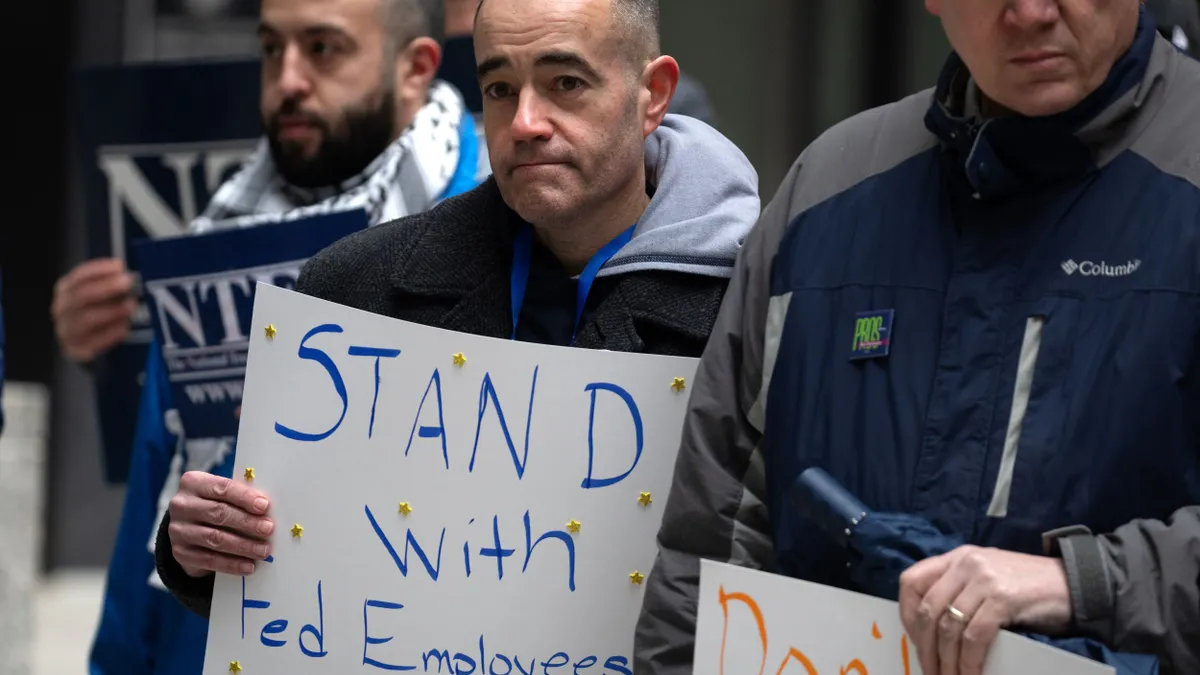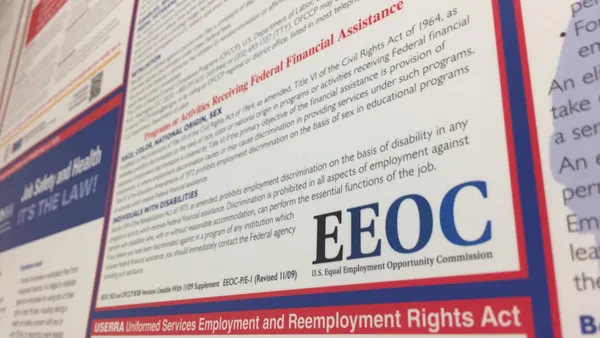Editor's note: Katie Clarey is one year into covering HR and continues to educate herself and readers on the building blocks of the field with her series, Back to Basics. If you're new to HR (or just need a little refresher), follow along as she speaks with experts and lays out the basics of federal employment law. She can be reached at [email protected].
LAS VEGAS — When supervisors sat down with Frank Brown to tell him he couldn't take leave to attend a doctor's appointment with his wife during the workday, he yelled and banged his fists on the table, court documents tell us. His employer, ScriptPro, fired him two days later.
Brown then sued ScriptPro, claiming it "interfered with the exercise of his rights under the [Family Medical Leave Act] and terminated him in retaliation for exercising those rights" (Brown v. ScriptPro, LLC, No. 11-3293 (10th Cir. Nov. 27, 2012)).
Fisher Phillips Regional Managing Partner Christine Howard introduced this case to a room of HR professionals at the Society for Human Resource Management 2019 Annual Conference. Afterward, she asked attendees to wager whether ScriptPro truly discriminated and retaliated against Brown. When participants hesitated, Howard said she would have, too, agreeing they needed more information to even make a guess.
In its opinion granting ScriptPro summary judgment, the 10th U.S. Circuit Court of Appeals revealed that ScriptPro had addressed Brown's poor performance — the stated reason for his termination — long before the drama surrounding his FMLA request surfaced. In fact, the court focused on the fact that ScriptPro issued Brown several performance reviews addressing his behavior, which included making co-workers uncomfortable by staring at them as they passed his cubicle, fighting loudly with his wife on the phone during work hours and interrupting conversations and starting arguments around the office.
This case highlights how courts will deal with retaliation claims, Howard said. Here, the 10th Circuit focused on the context of the claim, as established by documentation, prior performance management and consistent management practices.
Employers will want to take note — retaliation claims come up more than any other type of discrimination claim, Howard said referencing data from the U.S. Equal Employment Opportunity Commission (EEOC). "Nine out of 10 times, when we get an EEOC claim, they're going to tack on a retaliation claim," she said.
The road to retaliation
For an employer to retaliate against an employee, the worker must first engage in some kind of protected activity, Howard said. Protected activity, generally speaking, takes the form of opposition to discrimination or harassment.
An employee may complain about experiencing discrimination against themselves or complain about a colleague experiencing discrimination, according to Howard. An employee could participate in protected activity also by just threatening to complain. When an employee refuses to obey orders they believe to be discriminatory, they participate in protected activity. The same goes when they resist sexual advances from a co-worker or supervisor, or when they intervene to protect someone else from sexual harassment.
Workers carry out protected activity when participating in an internal investigation or when agreeing to be a witness in the deposition of an EEOC charge. Employees participate in protected activity when requesting and taking FMLA leave, asking for an accommodation or complaining about their compensation, Howard said.
Because there is a multitude of ways to participate in protected activity, there are many opportunities for employers to retaliate against workers. Multiple laws restrict employers from doing so. "Name the [employment] law, and it has a retaliation provision," Howard said. "You're not going to find an employment law that doesn't have a retaliation provision."
Adverse employment actions and the "but for" retaliation cause
An employer commits retaliation by carrying out an adverse action against an employee who has been involved in protected activity.
An adverse employment action is "a tangible change in working conditions" and must produce a "material employment disadvantage," Howard said, citing the 8th U.S. Circuit Court of Appeals. Retaliatory adverse action is slightly different, however. A retaliatory adverse action must reasonably or likely deter a worker from making a discrimination claim, according to Howard.
It's also important HR professionals understand that the retaliatory adverse action must be "but for" cause of retaliation, as the U.S. Supreme Court ruled in a 2013 decision, University of Texas Southwestern Medical Ctr. v. Nassar. In this ruling, the High Court concluded that workers claiming retaliation under Title VII of the Civil Rights Act of 1964 must prove "that the unlawful retaliation would not have occurred in the absence of the alleged wrongful action or actions of the employer," it said in its opinion.
"Retaliation red flags" and avoiding adverse action
As employers attempt to avoid retaliation charges, Howard said they may want to screen their managers overseeing employees involved in protected activity for "retaliation red flags" such as:
- Increased supervision or monitoring
- New performance issues
- Higher standards or expectations
- Supervisor complaints about employee
This doesn't mean employers must exempt workers involved in protected activity from warranted discipline, but they should be careful. The timing of employment actions, verbal or written statements, similarly situated employees and inconsistent action from different departments and managers can prove illegal causal connection, Howard said. Even in this instance, however, "the employee still has to prove ‘but for' this reason," she noted.
Employers can ward off retaliation claims through consistency, according to Howard. "The no. 1 deterrent to a retaliation claim is timely and consistent discipline," she said. "Timely and consistent discipline is critical."
HR's anti-retaliation to-do list:
Publicize and implement a retaliation policy: "You've got to have a policy on retaliation that's well-publicized," Howard said. Specifically, employers should have a standalone policy forbidding managers from retaliating against employees for carrying out protected activity. It's best if workplaces combine such a policy with multiple avenues for employees to complain about discrimination and retaliation.
Document retaliation-related activity: Employers need to document all instances of complaints, discipline, and follow-up. It's important for HR to make sure they have documentation to support discipline decisions that are non-privileged.
Highlight retaliation in training: Howard encouraged employers not to bury the subject of retaliation in their training agendas.
Encourage complaints: "We want employees to complain internally," she said. "It can be a good thing when an employee brings something forward."





















